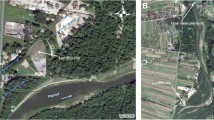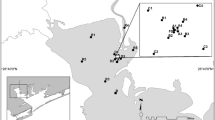Abstract
Using monitored natural attenuation is an increasingly popular strategy for dealing with contaminated aquifers. This paper provides a statistical methodology for the estimation of the relative efficiency of natural attenuation mechanisms. The methodology provides estimates, with associated measures of uncertainty, of the relative efficiency of four types of bio-degradation (oxidation using oxygen as the electron-acceptor, denitrification, iron reduction and sulfate reduction). A data set from Trecate, Italy, is analysed using the methodology. The analysis shows that sulfate is the main cause of hydrocarbon removal on this site. It is also seen that oxidation using oxygen seems to be more preferential than the other reactions, in the sense that this reaction is relatively more efficient than other reactions at locations where the hydrocarbon concentration is low.
Similar content being viewed by others
Author information
Authors and Affiliations
Corresponding author
Rights and permissions
About this article
Cite this article
Christensen, O., Cassiani, G., Diggle, P. et al. Statistical estimation of the relative efficiency of natural attenuation mechanisms in contaminated aquifers. Stochastic Environmental Research and Risk Assessment 18, 339–350 (2004). https://doi.org/10.1007/s00477-004-0200-x
Issue Date:
DOI: https://doi.org/10.1007/s00477-004-0200-x




